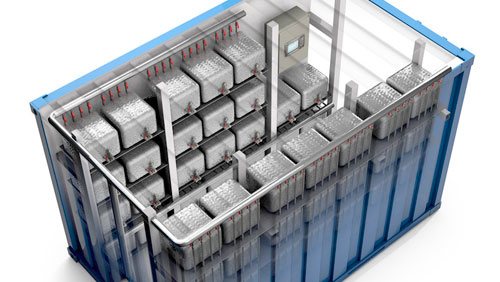
Tra i lettori che seguono lo sviluppo delle vicende relative all’E-Cat in molti aspettavano notizie importanti dal meeting di Pordenone. Andrea Rossi non ha deluso le aspettative e ha mostrato dei documenti che “infiammeranno le platee”, fan e detrattori. Infatti, l’ingegnere ha mostrato i risultati dei test sull’Hot Cat, con numeri davvero sbalorditivi.
Ma, va detto, i test non sono i famosi test svolti da un ente terzo. Sono stati svolti dalla stessa Leonardo Corporation: insomma, per gli scettici una probabile nuova “prova” della malafede di Rossi.
Estrapolando i dati più importanti del report, che i lettori possono trovare in forma integrale in calce all’articolo, notiamo soprattutto che:
- Il reattore è rimasto acceso per 14 giorni. Quindi l’Hot Cat sarebbe rimasto stabile per ben 2 settimane (a cui bisogna sottrarre soltanto il tempo di accensione e spegnimento);
- La temperatura raggiunta sarebbe pari a 1050 gradi;
- Il reattore avrebbe necessitato di un periodo di accensione di 4 ore. Lo stesso tempo sarebbe stato poi necessario per spegnerlo;
- Il COP (il rapporto fra l’energia prodotta e quella necessaria per attivare e sostenere le operazioni) raggiunto sarebbe stato di 11,7. Inutile commentare che si tratta di una cifra praticamente spaventosa.
[BANNER_CODE]
Ma qual è, chiederete voi, il grado di attendibilità delle notizia? Stiamo parlando di un test il cui capo delle operazioni è stato lo stesso Andrea Rossi e quindi, non una persona non interessata alla buona riuscita dell’esperimento. Ma questo limite è talmente evidente che non può essere considerata una critica: semplicemente questi dati non sono una prova del funzionamento dell’Hot Cat e non mirano a convincere gli scettici. Sono solo notizie utili per coloro che verso Rossi e il suo lavoro già nutrono sufficiente fiducia.
Di seguito il report in inglese scritto da Andrea Rossi, così come pubblicato su E-Cat World.
DATA
Please attention for the reading: we used the point “.” to incicate the decimals and the comma “,” to indicate the thousands, not the vice versa as used in many Countries; for example: 2,000.00 means “two thousand point zero cents”.
DESCRIPTION OF THE REACTOR
The reactor is a cylinder which has the following dimensions:
Length cm 33
Diameter cm 8.6
(See photos in the Penon Report attached)SURFACE:
cm^2 891
Has been eliminated the internal cylinder, so that the energy has been measured only on the external surface with the Stephan Boltzmann equation.Weight before the charge: g 4331
Weight before the test start: g 4351
Weight after the test stop: g 4350Weight of the charge: g 20
Test started: Sept 25th h 08.00 a.m.
Test finished: Oct 9th h 08.00 a.m.
Total duration of the test: 336 hours
OPERATION
Time to arrive to the full operation of the reactor: 4 hours
Time to shut down the reactor: 4 hours
Net operation time of the reactor stabilized: 328 hoursTEMPERATURES:
Room Temperature: average 25 °C
Temperature reached after 4 hours: 1050 °C
Average temperature for 228 hours: 1050 °CPOWER EMPLOYED
Self sustaining mode operation total time: 118 hours
Peak power employed: 5 kW circa
Average power employed: 2.4 kW circa (two point four kW)TOTAL ENERGY CONSUMED
kWh 278.4
ENERGY PRODUCED
T(°K)^4 = 2.838 * 10^12
W = 2.838 * 10^12 * 5.67 * 10^-8 * 8.91 * 10^2 * 10^-4 = 14,337 Wh * h^-1 (fourteen point threehundredthirtyseven kWh per hour)TOTAL ENERGY PRODUCED
KWh 3,268
COP = 3,268/278.4 = 11.7 (ELEVEN POINT SEVEN)
POWER DENSITY
163,4 MW*kg^-1 (onehundred sixtythree point four MWh per kg)
(see the Ragone Plot at pag. 15 of the Penon Report attached)



